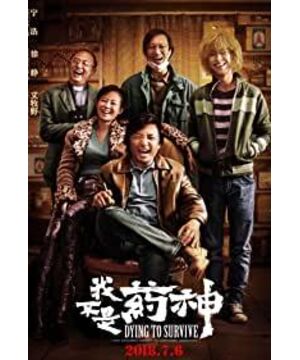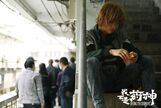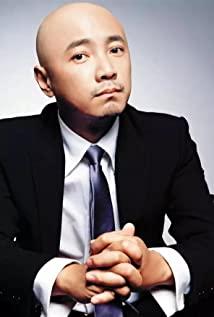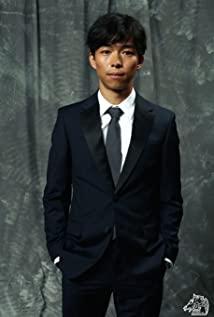The recent hit film "I'm Not the God of Medicine" is likely to be the most valuable Chinese film this year. The plot is adapted from a true event: The owner of a health care product, played by Xu Zheng, became the general agent of a certain Indian-made "life-saving medicine" at the begging of a group of cancer patients, and was thus involved in the whirlpool of life and law.
"Life-saving medicines" need to be purchased on behalf of others, which has become a helpless choice for seriously ill Chinese patients. Generic drugs purchased from India, Turkey, Bangladesh, and Israel are flowing into China.
For the same drug, the price of a domestic “authentic” original drug is often more than ten times the price of a generic drug in India. According to news reports, a monthly turnover of an Indian daigou can reach 7 million yuan.
Generic drugs, why India can do it, but China can't? Many have blamed the patent law and barriers to pharmaceutical patents resulting from WTO accession.
But in fact, this is not the main reason. The real problem is that developing generic drugs in China has been a struggle from start to finish.
Generic drugs, patent barriers are not a thing.
Patent barriers are indeed widespread in the pharmaceutical industry. For example, Gleevec, who goes by the pseudonym "Glenin" in "I'm Not the God of Medicine", is a life-saving drug for people with leukemia and has its own patents since its birth.
▍Gleevec is a drug that directly promotes human progress. It may be the first true "targeted drug" in human history.
From the discovery of the target to its approval for marketing in 2001, Gleevec's "birth" took a full 50 years. The pharmaceutical company Novartis invested more than 5 billion US dollars, directly achieving 5 academicians of the National Academy of Sciences, and spawned two enough to obtain Nobel Prize for major discoveries.
With such a research and development cycle and investment as Gleevec, if there is no patent, it is estimated that no company will be willing to produce it. So, its price is also very amazing.
In 2015, the original Swiss-made Gleevec was priced at 23,500 yuan for a box of 100mg * 60 tablets. According to different indications, it was enough for two weeks to two months. In China, it's even more staggering because of its unique tariff, pricing and sales system. Even in neighboring India, the price of the original Gleevec is around 10,000 yuan.
However, for Indians, the high prices of original drugs are not very important, because India has implemented a unique system to ensure the production of generic drugs, making India recognized as the world's largest country for generic drugs. A generic drug is not a "fake drug", it is a regular drug developed and produced by "copying" other patented drugs.
▍India's low drug prices not only benefit its own people, but also benefit foreigners who cannot afford high drug prices. India's generic drug exports have gradually been industrialized.
When it comes to "why Chinese generic drugs are not good", many analysts regard patent barriers as the key to the problem, pointing out India's long-term lack of support for foreign drug patents and the enforcement of international "compulsory licensing of drug patents".
The so-called "compulsory licensing of drug patents", in simple terms, means that when a major public health crisis occurs, such as infectious diseases, major diseases with high incidence rates, and the country is unable to produce "life-saving drugs", it can pass a A series of legal frameworks and negotiations to force patents.
But what few people have noticed is that the legal system support provided by India for generic drugs is not without the Chinese legal system.
Like India, China has also experienced an era of no patent-related laws and regulations for a long time, and an era of patent laws but little enforcement. The first patent law of 1985 did not protect medicines at all. Until 1992, in order to negotiate accession to the WTO, China issued a series of transitional regulations. After joining the WTO in 2001, China has only standardized drug patent regulations.
"Compulsory licensing" also has regulatory support. As early as January 2006, China passed the Measures for Compulsory Licensing of Patents Involving Public Health Issues. In 2015, the National Health and Family Planning Commission issued the "Notice on Printing and Distributing China's Three-Year Action Plan for Cancer Prevention and Control (2015-2017)", which mentioned:
It stands to reason that China can have the same powerful negotiating power for "compulsory licensing of pharmaceutical patents" as India. However, due to the difficulty in balancing the interests of all parties, this provision has not been practiced once since the promulgation of the Chinese Patent Law 30 years ago.
Even during the outbreak of bird flu in 2005, China did not approve Guangzhou Baiyunshan's request for a compulsory license for the "life-saving drug" Tamiflu. Instead, through negotiations, Roche authorized the production of Tamiflu to two other companies.
In fact, in terms of the patent system, China's patent law and loose patent management have done their best. Just this year, the State Council issued Opinion No. 20, relaxing patent restrictions and encouraging compulsory licensing.
If you want to make generic drugs, patents may not even be a problem at all - the last ten years are just the golden time for generic drugs, because the "patent cliff" has come.
The protection of pharmaceutical patents also has a certain period of time, usually 6 years. From 2013 to 2020, there are more than 200 varieties of patent expiry in the world each year, and many of them are star varieties. In 2014, the patents of 326 original research drugs in the world have expired, and all of them can be legally copied.
Therefore, the patent system cannot be blamed for China's difficulty in producing cheap generic drugs for patients to use. Although more than 95% of the batch numbers of Chinese chemical drugs are given to generic drugs, from the category, efficacy to price, Chinese generic drugs are strangely without advantages.
China's generic drug industry with layers of constraints
It is difficult to make new drugs in China, and it is also difficult to make generic drugs. It is difficult to make medicine, and the first difficulty lies in the lack of the ability of pharmaceutical companies.
To illustrate this point, let's start with the pharmaceutical production process.
Pharmaceuticals are not done in one day. Chemical raw materials have to undergo a series of complex treatments. The products in this process are called pharmaceutical intermediates. The final active ingredient is called the API, which is the active ingredient in the drug. With the active ingredients, we have to purify it, add pharmaceutical excipients, and make real capsules, tablets, and injections. This is something that requires an entire industry chain to complete.
If you want to make a generic drug, in addition to researching the "genuine", you must also find suitable intermediates, APIs, and pharmaceutical excipients. And most of these things are produced by more than 4,000 small and medium-sized pharmaceutical companies across the country.
Most of China's API and preparation pharmaceutical companies are small and medium-sized enterprises, and the market concentration of the "Top 100" companies is only about 50%, far lower than the global level of about 80%. Among them, many enterprises can not even meet the requirements of "Good Manufacturing Practice for Pharmaceutical Production" (GMP quality standard) and environmental pollution discharge requirements.
▍Statistics of the number of API and preparation pharmaceutical companies in China. In 2016, after the "implementation" of the GMP quality system and the strict environmental inspection campaign, the number of these enterprises dropped sharply by nearly 1,000.
The scale of the enterprise cannot increase, and the ability to obtain financing and R&D cannot increase. So far, the APIs that China produces and exports with the largest volume are still the low-end four: vitamins, food additives, sweeteners, and antibiotics. These "road goods" occupy production capacity, and at the same time bring about the problems of low profit in API production and dependence on imports of high-end varieties, forming a vicious circle.
The issue of pharmaceutical excipients is even more difficult to describe.
Compared with the US FDA's requirement that the excipients of generic drugs meet the same standards as drugs, the production and use of pharmaceutical excipients in China are basically not standardized. Although China issued the "Good Manufacturing Practice for Pharmaceutical Excipients" (Pharmaceutical Excipients GMP Standard) as early as 2006, this standard is non-mandatory, ignorant of management and unsupervised.
▍Pharmaceutical excipients are ingredients such as starch, film coating, disintegrant, adhesive, capsule shell, etc., which help you to swallow medicine better and play the role of medicine.
Don't underestimate the role of pharmaceutical excipients. A good capsule can determine whether a drug is accurately dispersed in the mouth, stomach or intestine, which directly affects the efficacy of generic drugs. A bad capsule can come from industrial gelatin with excess chromium.
▍The poisonous capsule incident occurred in China in 2014, and about 90 million harmful capsules entered the market.
When the raw materials are available, your generic drug can finally be developed and manufactured. At this time, the core problem that you need to solve comes: how to be sure that the generic drug has the same effect as the original drug?
Generic drugs are not "fake drugs". Just like developing new drugs, generic drugs require standardized R&D, production, and review. It is not enough to make the "substance" of the medicine as it is, but also to ensure the "consistency" - the same pharmacologically, the same effect on the human body.
However, just a few years ago, the consistency evaluation criteria for generic drugs in China were a mess.
For example, in order to review "consistency", it is first necessary to determine what the original drug used for reference is. The professional term is called "reference preparation". If you want to imitate amoxicillin, you have to choose one of the many brands of amoxicillin in the world in order to have a standard.
The formal system for reporting reference preparations in China has been absent for a long time. Even if the report is made, it may not be able to obtain the support of the original research drug company, or even because the original version of the drug is withdrawn from the market, the drug may not be available at all. There have also been cases in China where a reference preparation of a certain variety was released too late, leading to a massacre of 43 companies collectively "copying the wrong object".
▍After the document came out, 43 companies found that they collectively went the wrong way.
Due to the lack of review systems and standards, for a long time, domestic generic drugs have been safe and ineffective, with confusing reference preparations, random crystal forms and dosage forms, amateur materials, and irrelevant efficacy. definite.
After 2008, China has repeatedly checked the qualified domestic generic drugs on the market at that time, and compared the "in vitro dissolution curve" with the original research drugs, and found that almost all domestic generic drugs are far from the original research drugs.
▍In vitro dissolution curve study, which can simulate the dissolution and absorption of drugs by the human body in vitro. If the dissolution profiles of the generic drug and the original drug are too different, the efficacy is very questionable.
Fortunately, in 2013, China finally introduced a generic drug consistency evaluation system. The dissolution profile has been incorporated into an important indicator for evaluating "pharmaceutical consistency". Although the technical standard is extremely incomplete, it is still a big improvement.
But don't think this is the end, because there are more difficult "bioequivalence" testing problems later.
To review the "bioequivalence" of generic drugs, it is likely to pass the hurdle of clinical trials.
Due to relevant regulations, clinical trials in China can only be conducted in approved "clinical trial sites" with limited numbers and tight schedules. Most of these bases are also tertiary hospitals at the same time, and it is difficult for generic drugs to produce scientific research results. The indifferent attitude of these bases can be imagined.
And the hardest part is yet to come:
In the ten years since Zheng Xiaoyu, director of the State Food and Drug Administration, was executed for taking a huge amount of bribes in 2006, China's medical approvals have been cautious, restricting the amount, delaying, and not approving if possible. As a result, ten years later, the sudden arrival of the pharmaceutical industry caught China's regulatory authorities by surprise.
▍Zheng Xiaoyu embezzled millions of dollars and approved a variety of "fake drugs" to be marketed. A rodent and insecticide manufacturer in Shenyang registered its name as a brand, expressing hatred for corrupt officials.
In 2015, there were only more than 100 officials in charge of drug review in China, and they had to face more than 10,000 clinical and marketing applications for new drugs, generic drugs, medical devices and imported drugs, as well as thousands of supplementary applications and filings.
The regulator's solution: find a way to beat you back.
Therefore, there was the famous backlog and delay clause in the 2015 "731 Announcement". The card was set up at the expiration of the patent term, and many generic drugs that had been lined up for the review gate were directly driven home:
The good news is that after continuous measures to reduce the backlog, the backlog of our drug registration applications finally dropped from nearly 22,000 at the peak in 2015 to 8,863 at the end of 2016, and continued to decline in the following year.
Well, after all the hard work, your generic drug has finally passed the review.
It is estimated that for a generic drug to go through this formal process in China, at least 5 million to 10 million yuan is required - this is not counting the cost of rent-seeking and backlogs at all levels.
Due to the difficulty of making medicines, generic drugs in China are generally not cheap.
For example, Iressa (Gefitinib, Iressa), developed by AstraZeneca, is a targeted drug for non-small cell lung cancer. After the national drug price negotiation in 2016, the retail price of the original 250mg * 10 tablets/10 days is 2358 yuan.
Iressa's patent in China expired in April 2016, and then a large number of state-owned enterprises began to imitate it. In February 2017, Qilu Pharmaceutical's first imitation variety "Irico" was approved for listing, and the price for a 10-day supply was 1,850 yuan.
If you go to buy the Indian version of the imitation Iressa, the 10-day amount is about 211 yuan. Of course, it counts as "fake medicine" in China.
It's still not easy to use life-saving medicine
As mentioned above, even if the life-saving medicine is successfully copied in China, it is difficult for everyone to afford it, and it will be impossible to count on it for a while. However, the Chinese still have a life-saving straw: the national drug price negotiation, that is, the government will come forward to lower the price of the original drug companies.
As of last year, a total of 39 kinds of drugs have been successfully negotiated, and the price cuts are basically "50% off".
Take the most successful tenofovir (Viread) for example. This is a first-line hepatitis B drug developed by Gilead. The price when it enters China is 1,500 yuan for 300mg * 30 tablets (one month's amount). In 2016, the patent validity of tenofovir was sued by several Chinese companies. After several rounds of complicated tug-of-war, the court ruled that all tenofovir patents were invalid, and a large number of domestic generic drugs crowded into the battlefield.
In the same year, tenofovir participated in the national price negotiation and directly reduced the price by 67% to 499 yuan a month, which was only slightly higher than the Indian version.
However, the lag of national drug price negotiations makes Indian generic drugs still highly competitive - now, domestic patients have begun to purchase "Tenofovir II" TAF with less side effects from India, Laos and Bangladesh. The purchase price is only about 400 yuan a month.
Moreover, even if the price of the original drug is reduced after the national negotiation, or a manufacturer actually produces a domestic generic drug at a conscientious price, you may not be able to use it.
This is because, although China's medical insurance drug catalog is universal and determined by the health department, the hospital procurement, use management, and accounting reimbursement policies are provincial and involve local human resources and social security departments. Most of the general drugs can only be won by pharmaceutical companies through repeated public relations, one province by one province, or not.
▍Provincials' attitudes towards nationally negotiated drugs as summarized by the industry website "Huazhao Pharmaceutical Network".
Moreover, the National Medical Insurance Drug List is updated only once every five years.
Although the situation is gradually improving, in the next few years, domestic affordable life-saving drugs will still be out of reach. The dilemma of Chinese patients purchasing "fake medicines" from India will continue.
Don't forget, according to the prosecutor's decision not to prosecute, the main reason why Lu Yong, the prototype of "Yao Shen", was forgiven by the law was that his purchases for patients were all free help and no additional fees were charged, so he was not recognized as such. for sales behavior.
▍Lu Yong, the prototype of the protagonist of "I'm Not the God of Medicine", became a news figure for helping himself and other patients to purchase generic drugs in India.
If the shopper trusted by the patients is no longer a perfectly free defendant like Lu Yong, and the purchased medicines are still defined as "fake medicines" by Chinese law, then the shopper will still be imprisoned for the crime of selling counterfeit medicines in the criminal law. .
This is a difficult problem for a film to solve.
View more about Dying to Survive reviews











